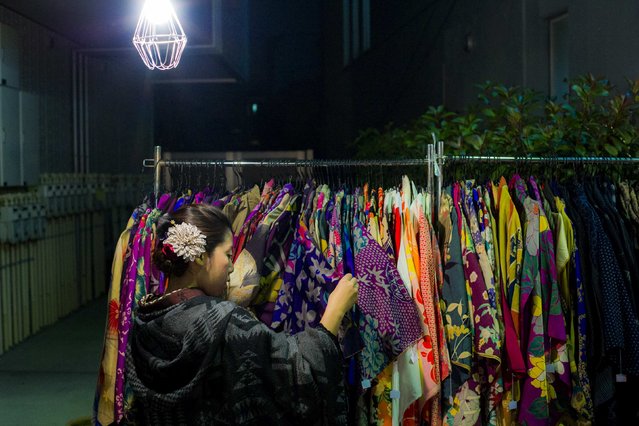
A woman browses through kimonos for sale at Boroichi flea market in Tokyo December 15, 2014. In the 16th century, Boroichi was a place for farmers to buy and sell rags, known as boro, for mending clothes and weaving sandals. Now in its 436th year, the original spirit lingers, with about 700 stands hawking fabric, used clothes and piles of rags. Others sell kitchen tools, pottery, seaweed and spices. About 200,000 people flock to the market, which is only open for four mid-winter days a year – two in December and two in January. (Photo by Thomas Peter/Reuters)
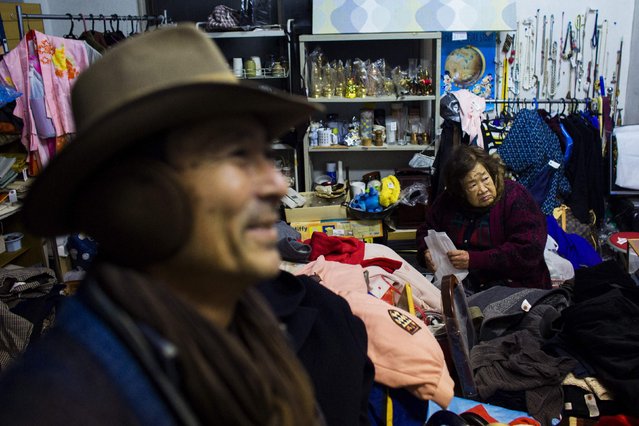
Regular customer Yoshiyuki Matsuura (L) visits a friend's indoor second hand clothes store at Boroichi flea market in Tokyo December 16, 2014. (Photo by Thomas Peter/Reuters)
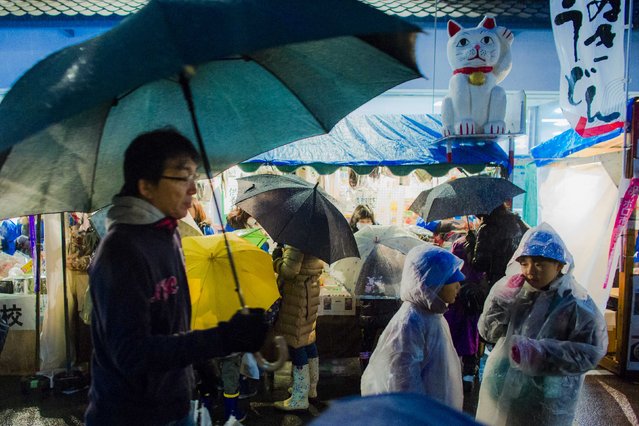
People look at goods at a stall at Boroichi flea market in Tokyo December 16, 2014. (Photo by Thomas Peter/Reuters)
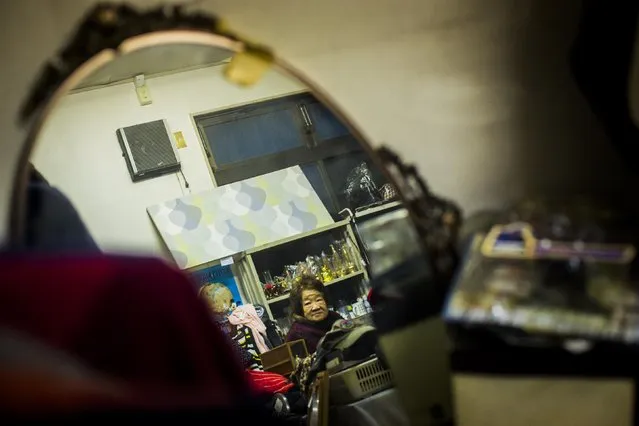
A woman sells rags and secondhand clothes at an indoor stall at Boroichi flea market in Tokyo December 16, 2014. (Photo by Thomas Peter/Reuters)
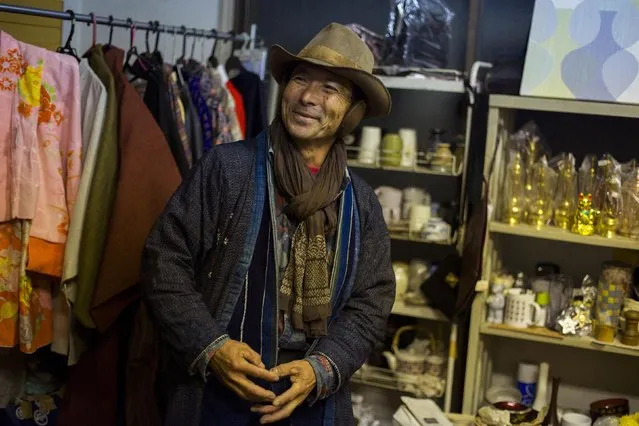
Yoshiyuki Matsuura, a regular customer, visits a friend's indoor secondhand clothes store at Boroichi flea market in Tokyo December 16, 2014. (Photo by Thomas Peter/Reuters)
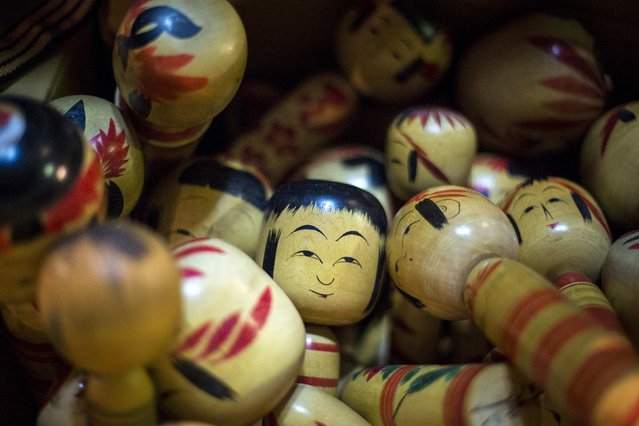
Traditional Kokeshi dolls from Japan's northern Tohoku area are piled up in a box at Boroichi flea market in Tokyo December 15, 2014. (Photo by Thomas Peter/Reuters)
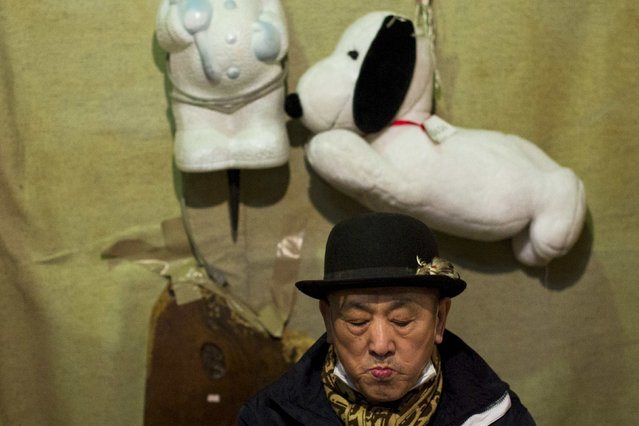
A trader sells secondhand goods at Boroichi flea market in Tokyo December 15, 2014. (Photo by Thomas Peter/Reuters)
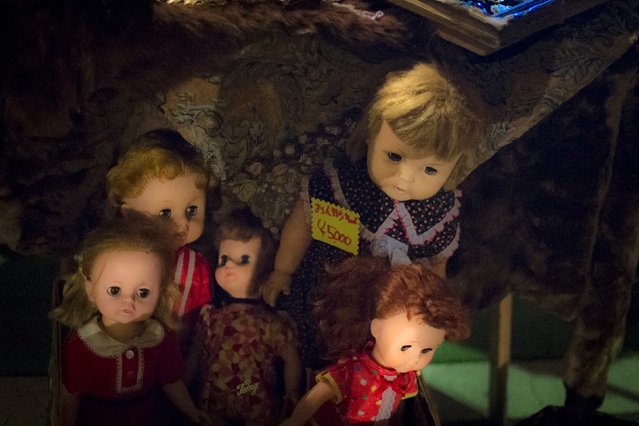
Vintage dolls are for sale at a stall at Boroichi flea market in Tokyo December 15, 2014. (Photo by Thomas Peter/Reuters)
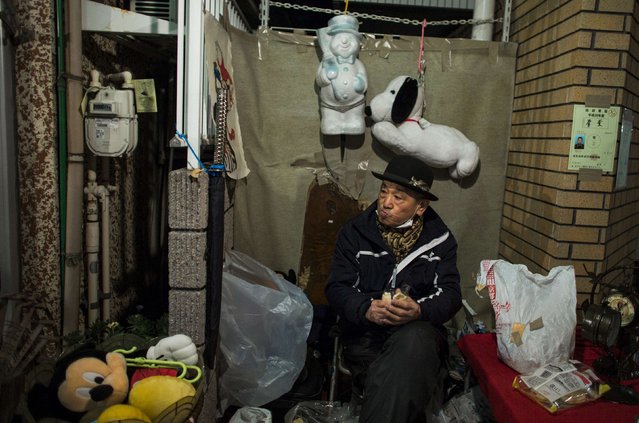
A trader sells secondhand goods at Boroichi flea market in Tokyo December 15, 2014. (Photo by Thomas Peter/Reuters)
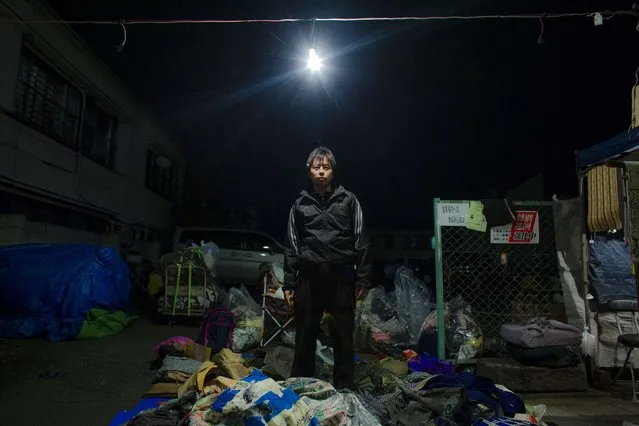
Trader Kazumoto Miyaoka poses in the pile of secondhand clothes and rags that he sells at Boroichi flea market in Tokyo December 15, 2014. (Photo by Thomas Peter/Reuters)
19 Dec 2014 12:50:00,
post received
0 comments
